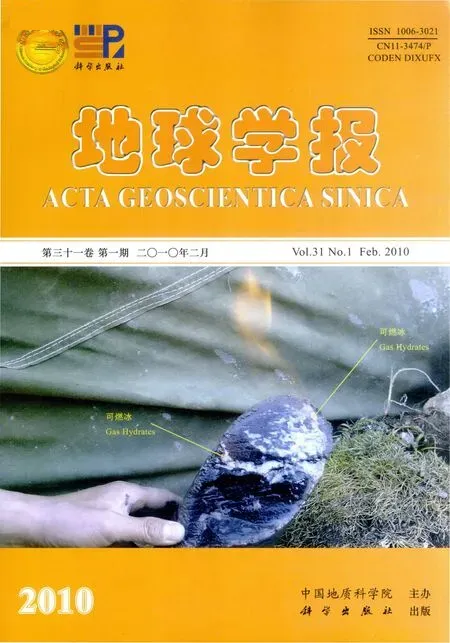A New Specimen of the Archaeopterodactyloid Germanodactylus Ramphastinus*
Taissa RODRIGUES,Alexander W.A.KELLNER&Oliver W.M.RAUHUT
1)Setor de Paleovertebrados,DGP, Museu Nacional / Universidade Federal do Rio de Janeiro.Quinta da Boa Vista s/n,São Cristóvão,Rio de Janeiro, RJ,20940-040, Brazil;
2)Bayerische Staatssammlung für Paläontologie und Geologie, Richard-Wagner-Strasse 10,80333,Munich, Germany
A New Specimen of the ArchaeopterodactyloidGermanodactylus Ramphastinus*
Taissa RODRIGUES1),Alexander W.A.KELLNER1)&Oliver W.M.RAUHUT2)
1)Setor de Paleovertebrados,DGP,Museu Nacional / Universidade Federal do Rio de Janeiro.Quinta da Boa Vista s/n,São Cristóvão,Rio de Janeiro,RJ,20940-040,Brazil;
2)Bayerische Staatssammlung für Paläontologie und Geologie,Richard-Wagner-Strasse10,80333,Munich,Germany
The pterodactyloid genusGermanodactylusis relatively poorly known.Two species have been described,although it has been recently suggested (Wanget al.,2008)that they might pertain to different genera.
Germanodactylus cristatusis known from two specimens.The holotype (BSP 1892 IV 1)consists of an incomplete semi-articulated skeleton (Wellnhofer,1970).It presents a premaxillary bony sagittal crest,somewhat triangular teeth and has no teeth at the tip of the lower jaw (Wellnhofer,1970;Bennett 2002;Wanget al.,2008).A second specimen has no bony sagittal crest but it has been suggested that the posterior part of it is preserved (Frickhinger,1999).Its specific identification is confirmed by the edentulous tip of the rostrum and the somewhat triangular teeth.This species has so far only been found in the Solnhofen Formation (Frickhinger,1999).
Germanodactylus ramphastinusis known from five skeletons,all of them probably from the Mörnsheim Formation (Frickhinger,1999),although some collection data refer to “Solnhofen” (Bennett,2002).The holotype (BSP AS I 745)consists of a partially articulated skeleton,with no clear signs of a premaxillary crest,and relatively longer,conical teeth.The tips of the jaws are preserved only as molds in the counterpart but certainly show a dentition present up to the tip of the mandible.Two specimens are now lost(Wellnhofer,1970).MCZ 1886 was recently described by Bennett (2002),who demonstrated the presence of a soft-tissue head crest in this specimen through the use of UV-light photography.The fifth specimen is here described (part JME Moe 12,counterpart BSP 1977 XIX 1).
JME Moe 12 and BSP 1977 XIX 1 come from the Malm sigma 3 layer in Daiting.The specimen consists of an almost complete skeleton.The presence of comparatively long,laterally-compressed conical teeth,present up to the tip of the lower jaw,enables its identification asGermanodactylus ramphastinus.The tip of the upper jaw is still unprepared.The bones are preserved articulated or in close association.The head was flipped on its dorsal-ventral axis,lying upside down in relation to the rest of the skeleton.
The cranium is partially preserved,with the bones of its posterior region disarticulated.They might have been lost or are still obscured by matrix.A bony sagittal crest is not obviously present,but some impressions on the surrounding matrix suggest the presence of a soft-tissue crest,as seen in MCZ 1886.The mandible is also preserved,with some features of the articular region obscured by an overlying left humerus.
Several vertebrae are present,including some articulated ones from the dorsal series.However,as is the case in several specimens from the Solnhofen Limestone,they are not well preserved.The bestpreserved vertebra is a cervical located near the posterior region of the skull,relatively long and seen in ventral view.In the thoracic region,some ribs are also visible,and the sternum is present only in the counterpart.
Both wings are present.The humeri are articulated with both scapulocoracoids,ulnae and radii.Left and right carpals,wing metacarpals and wing phalanxes,while not articulated,are preserved in close association.The right fourth wing phalanx might be still embedded in matrix.
The pelvis is not well preserved,except for the left prepubis.Although both femora are also preserved,much of the bone has been lost and their heads,still in articulation with the pelvis,are not clearly visible.The right tibia and fibula are preserved but the left tibia has also lost much of the bone,possibly during the splitting of the specimen.The left metatarsals are pre-served articulated but their proximal halves have been lost.The left phalanxes and ungueals are dissociated and scattered in the proximity.The metatarsals and phalanxes of the right foot are scattered but close to one another.
Although pterosaurs from the Solnhofen Limestone are known from dozens of specimens,the register forGermanodactylusis still scarce.With this new specimen,we hope to provide some new information on this poorly-known species.
BENNETT S C.2002.Soft tissue preservation of the cranial crest of the pterosaurGermanodactylusfrom Solnhofen.Journal of Vertebrate Paleontology 22(1):43-48.
FRICKHINGER K A.1999.Die Fossilien von Solnhofen 2.Goldschneck-Verlag.
WANG X,CAMPOS D A,ZHOU Z &KELLNER A W A.2008.A primitive istiodactylid pterosaur (Pterodactyloidea)from the Jiufotang Formation (Early Cretaceous),northeast China.Zootaxa 1813:1-18.
WELLNHOFER P.Die Pterodactyloidea (Pterosauria)der Oberjura-Plattenkalke Süddeutschlands.Bayerische Akademie der Wissenschaften,Mathematisch-Wissenschaftlichen Klasse,Abhandlungen 141:1-133.
古翼手龙类的德国翼手龙新标本
* Corresponding author.E-mail:taissa.rodrigues@gmail.com;kellner@mn.ufrj.br;o.rauhut@lrz.uni-muenchen.de.

